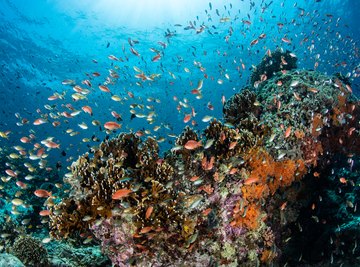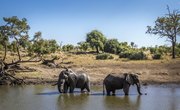
Whether underwater in a tropical reef, deep in a lush rainforest or high on a snow-capped mountain range, an ecosystem is composed of plants, animals and smaller organisms that live in a shared environment. Ecosystems range in size from microscopic to the whole of Earth, which is known as the biosphere. The ecosystems on this planet are countless, and each is distinct. However, all have some common characteristics.
The Hierarchy of Ecosystems
All ecosystems have a feeding hierarchy, consisting of an energy source like the sun, and producers, consumers, decomposers and nonliving chemicals such as:
- minerals
- other elements
These components depend on one another.
Biodiversity of Ecosystems
Earth is thought to have over 10 million different species, and ecosystems depend on such biodiversity for survival. Because each organism in an ecosystem has a purpose (known as a niche), the loss of just one species could significantly shift the balance. Studies have shown that changes in biodiversity can affect both the size and stability of an ecosystem.
If biodiversity declines, the ecosystem may become more susceptible to environmental issues like drought, as well as disease and pests. For example, tropical rainforests are complex ecosystems full of biodiversity, and so plants and animals thrive there. But when a rainforest is altered to support a banana farm, pest problems abound.
Regular Temperature and Rainfall Patterns
Due to complicated global climate patterns, different areas have unique and relatively cyclical climates.
Ecosystems form in response to the unique but predictable climate of each geographic area. And since elevation and topography affect climate, ecosystems are different at different elevations. The life in any given ecosystem is the direct result of elevation, topography, and temperature and rainfall patterns.
For example, vegetation in a desert is sparse due to temperature extremes and lack of rainfall. The plant life that does exist is adapted to conserve water. Desert fauna also have adapted for water conservation. And since the plants are important water sources for the animals, many of the plants have developed extreme protection methods like cactus needles.
There you have it – the wonderful world of ecosystems.
References
About the Author
Jennifer King has written and edited since 1994, and now works as a business technical writer. Her articles appear on GardenGuides, eHow and LIVESTRONG.COM. King has a Bachelor of Arts in English, a minor in Latin American and Caribbean studies, coursework in yoga and certifications in nutrition and childhood development.
